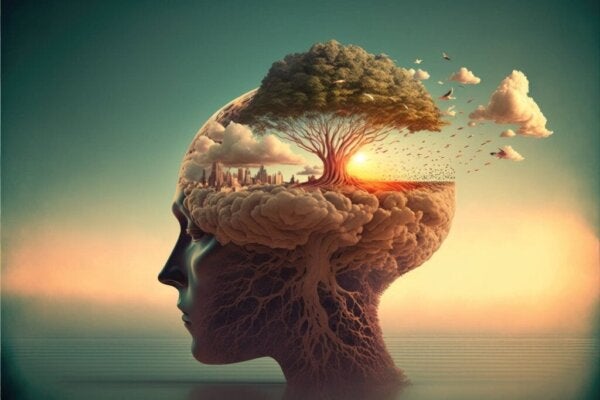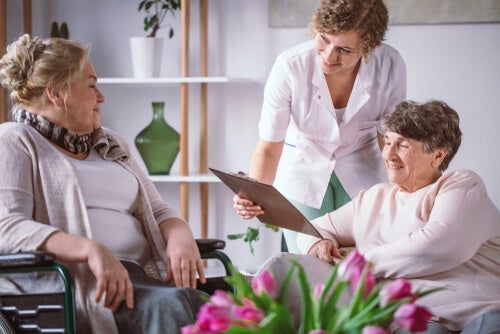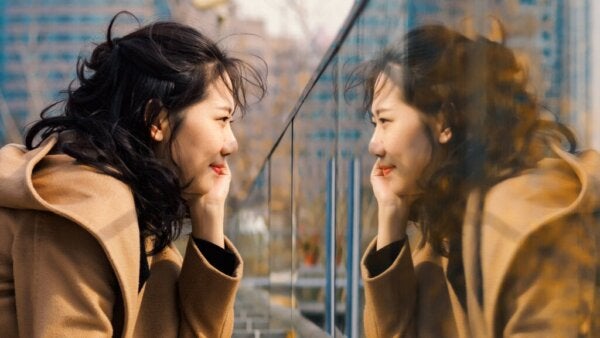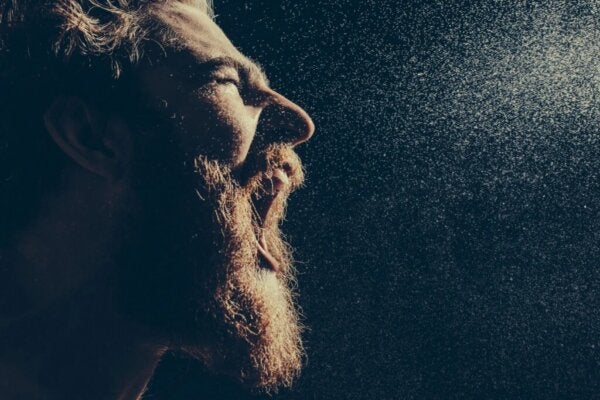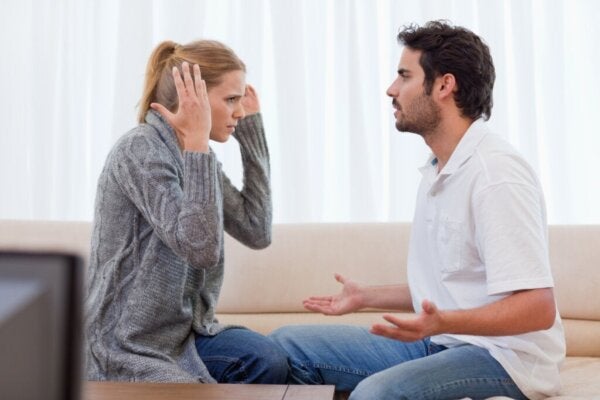스트레스를 관리하는 7가지 방법
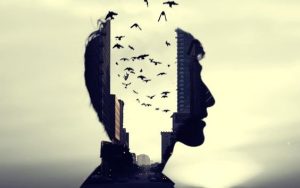
스트레스는 현대 사회에서 가장 큰 문제 중 하나이다. 특히 선진국에서는 더더욱 그러하다. 빠른 속도의 세계를 차분하게 유지하는 것은 결코 쉽지 않고, 대도시의 소음과 적대감을 다루기도 쉽지 않다. 인간의 스트레스를 관리하는 일은 결코 쉽지 않다.
단기적으로도, 장기적으로도 스트레스는 정신과 신체에 해를 끼칠 수 있다. 많은 신체적인 질병은 과도한 스트레스에서 비롯된다. 그와 동시에, 스트레스는 우리의 마음을 막아 명확하게 생각할 수 없게 만들고, 우리의 인간 관계에도 영향을 미친다.
그러나 두려워하지 마라. 스트레스 관리는 몇 가지 간단한 방법을 활용하면 충분히 가능하다. 모든 것은 아래에서 설명하는 몇 가지 방법을 적용하고, 중단하고를 반복하면 충분히 해낼 수 있다.
2. 호흡 기술 활용
호흡은 항상 우리가 살아가기 위해 하는 행동이다. 하지만 이 호흡을 스트레스를 관리하기 위한 도구로 사용할 수 있다. 이것은 삶에 평화를 가져다 주는 훌륭한 방법이다. 천천히 리드미컬한 호흡을 통해, 우리의 미주 신경을 활성화시킬 수 있다는 것이 여러 연구를 통해 입증되었다. 이것은 우리의 스트레스에 영향을 줄 수 있다.
편안한 자세를 잡고, 깊게 숨을 쉬기만 하면 된다. 공기로 채우는 폐에 집중하자. 그 다음 천천히 숨을 내쉬면 된다. 2~3분 후 마음이 진정되고, 스트레스가 줄어들 것이다.
3. 주의를 다른 데로 돌려보자
스트레스는 싸움이나 다른 응답과도 관련이 있다. 그래서 우리는 긴장감을 불러 일으키는 것에 모든 관심을 기울이게 된다.
이러한 불안정한 근원에 더 집중하면 할수록, 우리는 더 많은 스트레스를 느끼게 된다.
그렇기 때문에 때로는 주의를 돌리는 것이 중요하다. 당신 주위의 무언가를 한번 살펴보자. 가능한 한 많은 세세한 면모를 가지고, 정신적으로 묘사해보자.
그 다음, 두 개의 다른 대상을 통해 같은 연습을 반복해보자. 이렇게 하면, 우리의 스트레스를 관리하고 우리의 충동을 조절하며, 즉각적이고 감정적인 전망을 넓힐 수 있게 된다.

4. 편안한 이미지를 바라보자
그림의 이미지는 그 그림을 보는 사람에게 감각을 전달한다. 그렇기 때문에 항상 사진이나 이미지를 준비해 두는 것이 좋다. 특히 한적한 곳이나 추운 날씨의 한적하고, 초목이 가득한 들판, 물과 관련된 풍경의 사진이 좋다.
스트레스를 받으면, 우리는 편안한 이미지를 보고, 긴장을 풀 수 있다. 우리의 불안함을 덜어주는 즐거운 무언가에 당신의 마음을 집중시키는 방법이 될 수 있다.
5. 경험을 재해석하자
스트레스에 집중하면, 스트레스는 그만큼 더 심해진다. 우리는 너무 많은 고뇌를 느끼고, 가능한 빨리 그 고뇌를 없애기를 원한다. 이것이 항상 쉬운 것은 아니기 때문에 우리는 진정하지 못하고 오히려 더 걱정하게 될 수도 있다.
따라서 스트레스를 확인하고, 이를 받아들이는 것이 중요하다. 사람마다 스트레스를 조절하는 방법은 각기 다르기 때문에 적절한 방법을 찾아 사용하는 것이 중요하다.
스트레스가 나타나는 모든 방법을 알아보자. 당신의 몸에서 무엇을 느끼는가? 지금 기분이 어떠한가? 얼마나 빨리 심장이 뛰고 있는가? 지금 어떤 생각이 떠오르고 있는가?
이 질문들은 지금 당신이 느끼는 것을 재해석하는데 도움이 될 것이다. 그 다음, 긴장감이 서서히 사라지게 될 것이다.
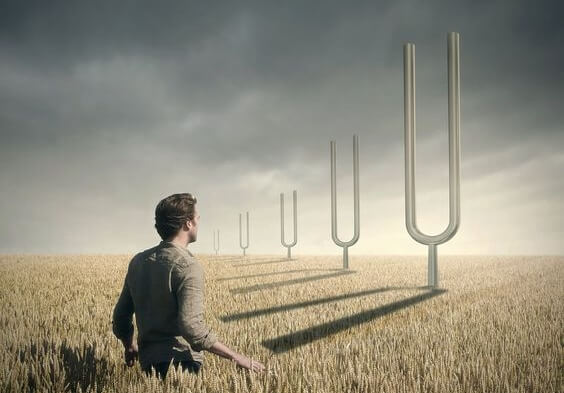
6. 긴장 완화를 위한 몸동작을 취해보자
스트레스를 부르는 자세와 스트레스를 방지하는 자세가 있다. 스트레스를 부르는 자세를 예를 들자면, 다리를 꼬아서 앉는 것이다. 꾸준한 속도로 다리를 꼬는 것이 스트레스의 신호가 될 수 있다. 엉덩이를 뒤로 젖히고, 얼굴 근육을 꽉 조이는 것도 또 다른 신호가 될 수 있다.
반면에, 등 뒤로 똑바로 서서 얼굴을 움직이면, 스트레스를 완화시키는 데 도움이 될 수 있다. 그것은 자신감과 안정감을 가져다주는 자세이다. 건강 심리학에 의한 연구에 따르면, 이 자세는 긴장을 부르는 물질인 코르티솔의 분비를 억제할 수 있다.
7. 손으로 간단한 운동을 하자
양손으로 주먹을 단단히 쥐고 그 주먹을 펴면, 스트레스를 줄일 수 있다는 것이 입증되었다. 그것은 공격적인 몸짓이며, 그 이유 때문에 긴장을 풀어줄 수 있다.
이러한 모든 방법들은 스트레스 관리에 매우 효과적이다. 우리가 현대의 삶에서 스트레스를 느끼는 것은 지극히 정상이다. 특히, 우리가 대도시에 살면 더욱 그렇다. 하지만 무엇보다 중요한 것은 스트레스를 여러 가지 방법을 활용하여 제어하는 것이다.
인용된 모든 출처는 우리 팀에 의해 집요하게 검토되어 질의의 질, 신뢰성, 시대에 맞음 및 타당성을 보장하기 위해 처리되었습니다. 이 문서의 참고 문헌은 신뢰성이 있으며 학문적 또는 과학적으로 정확합니다.
- American Psychological Association [APA]. (2007). Stress a Major Health Problem in The U.S., Warns APA. Consultado el 30 de marzo de 2023. https://www.apa.org/news/press/releases/2007/10/stress
- Biradar, S. & Patil, A. (2021). Effectiveness of Guided Imagery Technique in Reduction of Stress Level among Chronic Renal Failure Patients. Indian Journal of Forensic Medicine & Toxicology, 15(3), 4105-4111. https://medicopublication.com/index.php/ijfmt/article/view/15938
- Burg, M. M., Schwartz, J. E., Kronish, I. M., Diaz, K. M., Alcantara, C., Duer-Hefele, J., & Davidson, K. W. (2017). Does Stress Result in You Exercising Less? Or Does Exercising Result in You Being Less Stressed? Or Is It Both? Testing the Bi-directional Stress-Exercise Association at the Group and Person (N of 1) Level. Annals of behavioral medicine : a publication of the Society of Behavioral Medicine, 51(6), 799–809. https://www.ncbi.nlm.nih.gov/pmc/articles/PMC5597451/
- Can, Y. S., Iles-Smith, H., Chalabianloo, N., Ekiz, D., Fernández-Álvarez, J., Repetto, C., Riva, G., & Ersoy, C. (2020). How to Relax in Stressful Situations: A Smart Stress Reduction System. Healthcare (Basel, Switzerland), 8(2), 100. https://www.ncbi.nlm.nih.gov/pmc/articles/PMC7349817/
- Choi, D. W., Chun, S. Y., Lee, S. A., Han, K. T. & Park, E. C. (2018). Association between sleep duration and perceived stress: salaried worker in circumstances of high workload. International journal of environmental research and public health, 15(4), 1-11. https://www.ncbi.nlm.nih.gov/pmc/articles/PMC5923
- Cleveland Clinic. (2021, January 28). Stress. Consultado el 30 de marzo de 2023. https://my.clevelandclinic.org/health/articles/11874-stress
- Dolbier, C. L. & Rush, T. E. (2012). Efficacy of abbreviated progressive muscle relaxation in a high-stress college sample. International Journal of Stress Management, 19(1), 48-68. https://psycnet.apa.org/record/2012-04979-002
- de la Torre, A., Caparros, R. A., Bastard, T., Vico, F. J. & Buela, G. (2017). Acute stress recovery through listening to Melomics relaxing music: A randomized controlled trial. Nordic Journal of Music Therapy, 26(2), 124-141. https://www.tandfonline.com/doi/abs/10.1080/08098131.2015.1131186
- Emmons, R. A. (2007). Thanks!: How the new science of gratitude can make you happier. Houghton Mifflin Harcourt.
- Ewert, A. & Chang, Y. (2018). Levels of nature and stress response. Behavioral Sciences, 8(5), 1-13. https://www.ncbi.nlm.nih.gov/pmc/articles/PMC5981243/
- Fekete, E. & Deichert, N. (2022). A brief gratitude writing intervention decreased stress and negative affect during the COVID-19 pandemic. Journal of Happiness Studies, 23(6), 2427-2448. https://www.ncbi.nlm.nih.gov/pmc/articles/PMC8867461/.
- Ford, B. Q., Lam, P., John, O. P. & Mauss, I. B. (2018). The psychological health benefits of accepting negative emotions and thoughts: Laboratory, diary, and longitudinal evidence. Journal of personality and social psychology, 115(6), 1075-1092. https://www.ncbi.nlm.nih.gov/pmc/articles/PMC5767148/
- Gerritsen, R. J. & Band, G. P. (2018). Breath of life: The respiratory vagal stimulation model of contemplative activity. Frontiers in human neuroscience, 12(397), 1-25. https://www.ncbi.nlm.nih.gov/pmc/articles/PMC6189422/
- Gonzalez, M. J. & Miranda-Massari, J. R. (2014). Diet and stress. Psychiatric Clinics, 37(4), 579-589. https://pubmed.ncbi.nlm.nih.gov/25455067/
- Grassini, S. (2022). A systematic review and meta-analysis of nature walk as an intervention for anxiety and depression. Journal of Clinical Medicine, 11(6), 1-15. https://www.ncbi.nlm.nih.gov/pmc/articles/PMC8953618/
- Hasegawa, H., Uozumi, T.& Ono, K. (2004). Psychological and physiological evaluations of music listening for mental stress. The Hokkaido Journal of Medical Science, 79(3), 225-235. https://europepmc.org/article/med/15188631
- Jallo, N., Ruiz, R. J., Elswick, R. K. & French, E. (2014). Guided imagery for stress and symptom management in pregnant African American women. Evidence-based complementary and alternative medicine, 2014, 1-14. https://www.hindawi.com/journals/ecam/2014/840923/
- Jerath, R., Crawford, M. W., Barnes, V. A. & Harden, K. (2015). Self-regulation of breathing as a primary treatment for anxiety. Applied psychophysiology and biofeedback, 40(2), 107-115. https://link.springer.com/article/10.1007/s10484-015-9279-8
- Jo, H., Song, C. & Miyazaki, Y. (2019). Physiological benefits of viewing nature: A systematic review of indoor experiments. International Journal of Environmental Research and Public Health, 16(23), 1-23. https://www.ncbi.nlm.nih.gov/pmc/articles/PMC6926748/
- Kugali, S. N. & Natekar, D. S. (2020). Best Remedy: Effective and Safe Therapy as Guided Imagery in Cancer Patients. Indian Journal of Public Health Research & Development, 11(8), 122-126. https://medicopublication.com/index.php/ijphrd/article/view/10193
- Leger, K. A., Charles, S. T. & Almeida, D. M. (2020). Positive emotions experienced on days of stress are associated with less same-day and next-day negative emotion. Affective science, 1(1), 20-27. https://www.ncbi.nlm.nih.gov/pmc/articles/PMC8188996/
- Liu, J. J., Ein, N., Gervasio, J. & Vickers, K. (2019). The efficacy of stress reappraisal interventions on stress responsivity: A meta-analysis and systematic review of existing evidence. PLoS One, 14(2),1-22. https://journals.plos.org/plosone/article?id=10.1371/journal.pone.0212854
- Li, F., Luo, S., Mu, W., et al. (2021). Effects of sources of social support and resilience on the mental health of different age groups during the COVID-19 pandemic. BMC psychiatry, 21, 1-14. https://www.ncbi.nlm.nih.gov/pmc/articles/PMC7789076/.
- Ma, X., Yue, Z. Q., Gong, Z., et al. (2017). The effect of diaphragmatic breathing on attention, negative affect and stress in healthy adults. Frontiers in psychology, 8(874), 1-12. https://www.frontiersin.org/articles/10.3389/fpsyg.2017.00874/full?fbclid=IwAR2Yzjbt9glZxPoMDRnRf4MkzvFXHhspagUowQFODilbJlyNhI1gdw8DSAM
- Nair, S., Sagar, M., Sollers, J., Consedine, N. & Broadbent, E. (2015). Do slumped and upright postures affect stress responses? A randomized trial. Health Psychology, 34(6), 632-641. https://psycnet.apa.org/doiLanding?doi=10.1037%2Fhea0000146
- National Health Service. (2022, November 22). Stress. Consultado el 30 de marzo de 2023. https://www.nhs.uk/mental-health/feelings-symptoms-behaviours/feelings-and-symptoms/stress/
- Nollet, M., Wisden, W. & Franks, N. P. (2020). Sleep deprivation and stress: a reciprocal relationship. Interface focus, 10(3), 1-11. https://www.ncbi.nlm.nih.gov/pmc/articles/PMC7202382/
- Novais, P. G. N., Batista, K. D. M., Grazziano, E. D. & Amorim, M. H. C. (2016). The effects of progressive muscular relaxation as a nursing procedure used for those who suffer from stress due to multiple sclerosis1. Revista latino-americana de enfermagem, 24. https://www.scielo.br/j/rlae/a/XzGJgYLV9NkwKxWvdq3f6SN/abstract/?lang=en
- Olafsdottir, G., Cloke, P., Schultz, A., van Dyck, Z., Eysteinsson, T., Thorleifsdottir, B. & Vögele, C. (2016). Walking in nature has a stress-buffering effect on chronic but not acute stress. European Health Psychologist, 18, 486-486. https://www.ehps.net/ehp/index.php/contents/article/view/1839
- Peen, J., Dekker, J., Schoevers, R. A., Have, M. T., de Graaf, R. & Beekman, A. T. (2007). Is the prevalence of psychiatric disorders associated with urbanization? Social Psychiatry and Psychiatric Epidemiology, 42, 984-989. https://link.springer.com/article/10.1007/s00127-007-0256-2
- Schultchen, D., Reichenberger, J., Mittl, T., Weh, T. R., Smyth, J. M., Blechert, J. & Pollatos, O. (2019). Bidirectional relationship of stress and affect with physical activity and healthy eating. British journal of health psychology, 24(2), 315-333. https://www.ncbi.nlm.nih.gov/pmc/articles/PMC6767465/.
- Tost, H., Champagne, F. A. & Meyer, A. (2015). Environmental influence in the brain, human welfare and mental health. Nature neuroscience, 18(10), 1421-1431. https://www.nature.com/articles/nn.4108
- Toussaint, L., Nguyen, Q. A., Roettger, C., Dixon, K., Offenbächer, M., Kohls, N., … & Sirois, F. (2021). Effectiveness of progressive muscle relaxation, deep breathing, and guided imagery in promoting psychological and physiological states of relaxation. Evidence-Based Complementary and Alternative Medicine, 2021, 1-8. https://www.hindawi.com/journals/ecam/2021/5924040/
- Uusberg, A., Thiruchselvam, R. & Gross, J. J. (2014). Using distraction to regulate emotion: Insights from EEG theta dynamics. International Journal of Psychophysiology, 91(3), 254-260. https://www.sciencedirect.com/science/article/abs/pii/S0167876014000075?via%3Dihub
- Vlemincx, E., Van Diest, I. & Van den Bergh, O. (2016). A sigh of relief or a sigh to relieve: The psychological and physiological relief effect of deep breaths. Physiology & behavior, 165, 127-135. https://www.sciencedirect.com/science/article/abs/pii/S0031938416305121
- Yaribeygi, H., Panahi, Y., Sahraei, H., Johnston, T. P. & Sahebkar, A. (2017). The impact of stress on body function: A review. EXCLI journal, 16, 1057-1072. https://www.ncbi.nlm.nih.gov/pmc/articles/PMC5579396/.
- Witten, E., Ryynanen, J., Wisdom, S., Tipp, C. & Chan, S. W. (2023). Effects of soothing images and soothing sounds on mood and well‐being. British Journal of Clinical Psychology, 62(1), 158-179. https://bpspsychub.onlinelibrary.wiley.com/doi/abs/10.1111/bjc.12400
- World Health Organization. (2022, 5 de octubre). Physical activity. https://www.who.int/news-room/fact-sheets/detail/physical-activity
이 텍스트는 정보 제공 목적으로만 제공되며 전문가와의 상담을 대체하지 않습니다. 의심이 들면 전문가와 상의하십시오.

